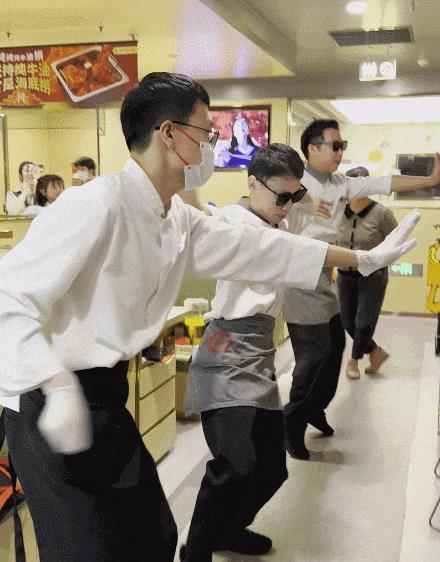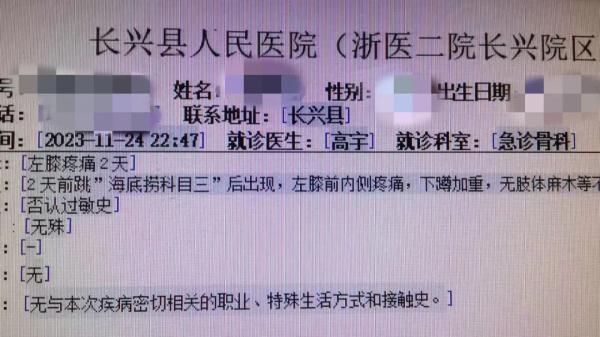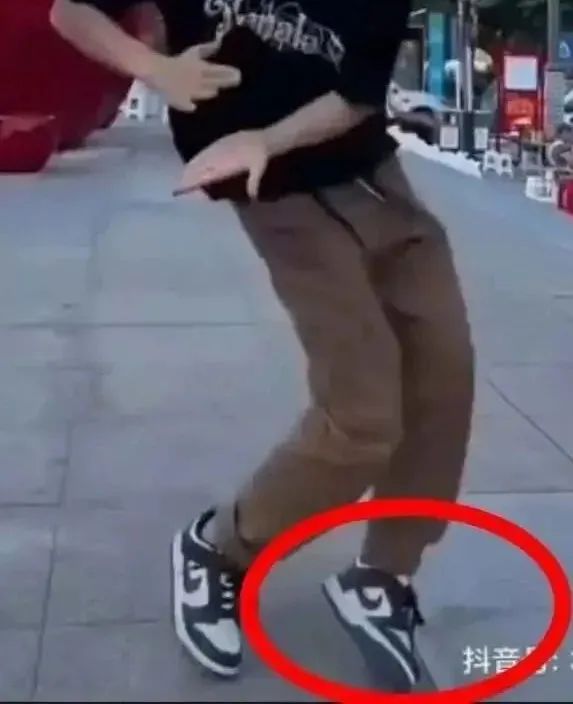The magic "subject three" dance screen! Someone jumped and caused bone contusion! The doctor reminded …
near future
Many people’s social platforms
It was screened by a dance "Subject III"

(The "Subject III" dance that exploded on the Internet)
Shake one’s hands, waist and hips.
And a half-twisted foot
With the music with bright rhythm
It’s really magical
It also attracted many people to watch.
Many netizens are eager to try.
Want to learn


Although "subject three" is so happy.
It’s true that people are vulnerable.
Someone has jumped into the hospital.
After 00, my little brother jumped "subject three" and caused bone contusion.
Recently, the emergency orthopedics department of Changxing County People’s Hospital in Huzhou, Zhejiang Province received a younger brother after 00, because after jumping "Subject III" two days ago, his knee pain was unbearable and he could not squat.

After imaging examination, it was diagnosed as tibial plateau bone contusion and needed to be braked and rested.
The dance movements of "Subject III" can be divided into three parts: silky footwork, hand-waving, and crotch twisting. Among them, the most important thing to pay attention to is the silky footwork. Simply put, it means turning your feet over and practicing step by step, and gradually accelerating after proficiency.

However, if this movement is good, the silk will slide back in the next second, and if it is not good, it may sprain its ankle in the next second, because this movement is very similar to varus (instep outward, instep inward), one of the movements with high incidence of sprain.
The doctor reminded that the movement of "Subject III" requires a half-twisted foot varus. Jumping this movement requires the joint to be turned inside out quickly, and the tension is relatively large. If the strength and coordination of the knee joint and ankle joint are not enough, it will easily lead to sprain.
Beginners are prone to injury.
These people don’t recommend jumping with them.
Li Yuruo, director of the Sports Medicine Center of the First Affiliated Hospital of Jinan University, said that "Subject III" dance requires high joint flexibility. If you don’t have a dance foundation or learn to dance at will without professional practice, you are likely to get injured, such as ligament strain around your ankle and knee joint, ligament tear in severe cases, and even fracture.
"Subject 3" has a very fast rhythm, and it may be sprained if you are not careful. Beginners should not do some movements if they find them impossible, difficult or a little painful to do. After jumping, the joints of the limbs should be relaxed and stretched.

In fact, many people who suffer from dancing injuries are professional dancers. They may have danced all day, or trained for a long time. The muscles around the knee joint and ankle joint have been strained for a long time, and they didn’t choose to see a doctor until the pain was unbearable. In addition, there are also patients who are not relaxed and stretched properly during dancing, resulting in dancing injuries.
Experts remind that people with sprained ankles or old problems often sprain their ankles, meniscus injuries, cartilage injuries, ligament injuries, etc. in the knee joint are not suitable for dancing with large movements of ankles and knees.
What should I do after spraining my ankle?
If you sprain or sprain after dancing or accidentally, you’d better stop exercising immediately. If the affected area is swollen seriously, seek medical advice actively, and recommend the classic treatment method of ankle sprain before seeking medical advice. RICE principle:
R-rest: Stop activities, let the injured part rest still, and reduce further injuries.
Ice compress (I-ice): It can reduce the temperature of the injured part, relieve inflammation and muscle spasm, relieve pain and inhibit swelling. 10~20 minutes each time, more than 3 times a day. Be careful not to apply the ice directly to the affected area. You can wrap the ice with a wet towel to avoid frostbite. Ice compress is limited to 48 hours after injury.
C-compression: Use elastic bandage to wrap the injured ankle joint, and apply appropriate pressure to reduce swelling. Be careful not to over-pressurize, otherwise it will aggravate the swelling and ischemia of the distal limb of the package.
E-elevation: Raise the injured ankle slightly above the heart level to reduce swelling.
Note: even if there is no fracture, it should be braked for 2~3 weeks after sprain, so that the damaged ligament can be repaired and healed in the normal position.
How to effectively prevent sprain?
Exercise moderately, maintain muscle strength and flexibility, and warm up before exercise;
When you are on the slippery ground, you should walk carefully;
Wear high-heeled shoes or boots as far as possible to protect the ankle joint when moving on uneven roads;
Don’t wear shoes with worn soles;
Ankle sprain is easy to happen in the dark, so pay attention to lighting at night.
Transferred from: Guangzhou Health and Health Commission
]